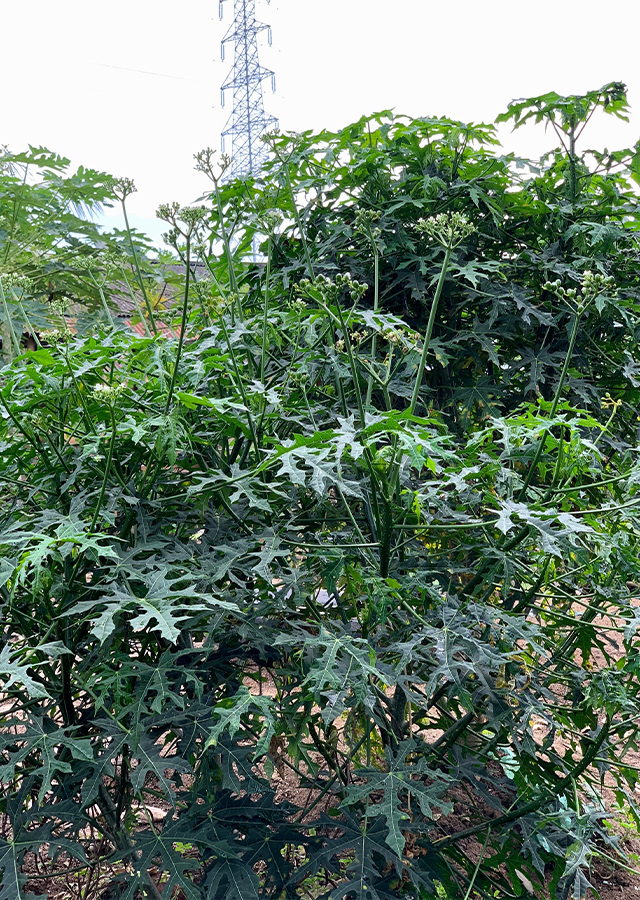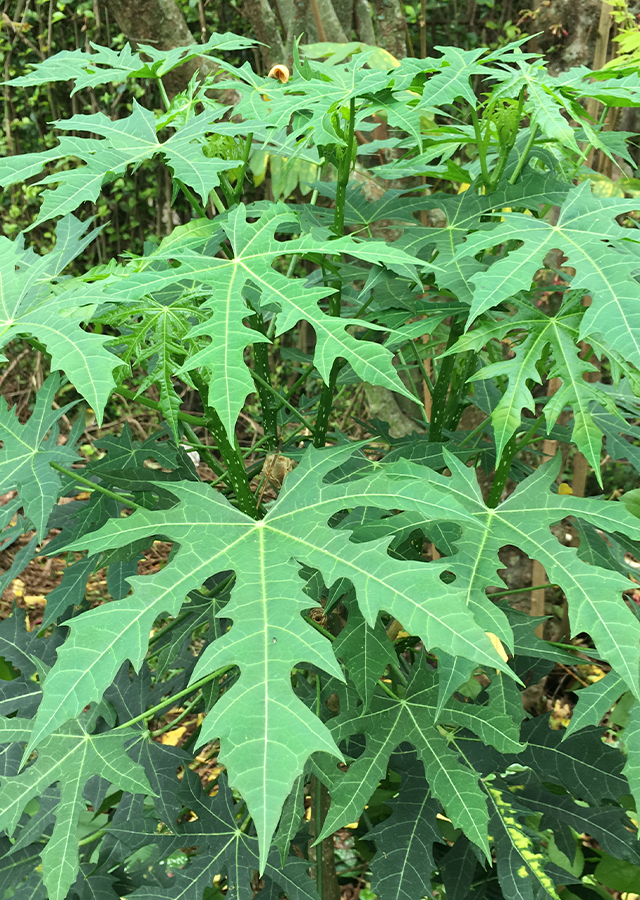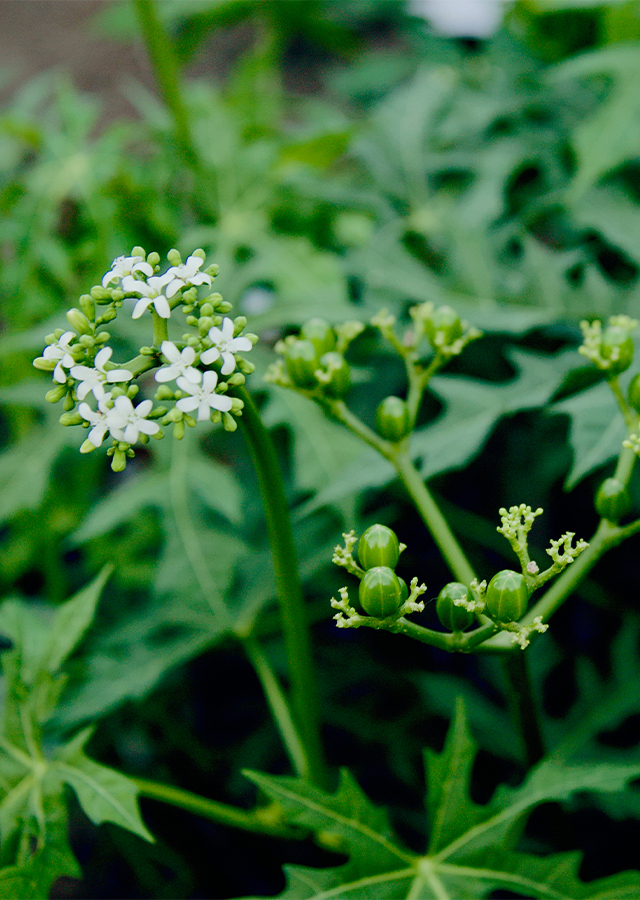Traditional Herbs from Cnidoscolus aconitifolius
control_blood_pressure
- Take 5 papaya leaves, wash them until clean.
- Boil them in 500 ml of water for 20 minutes until the remaining water is 3\u20444 water.
- Drink 1 time a day.
What is Cnidoscolus aconitifolius Looks like??



Parts of Cnidoscolus aconitifolius that could be used
- Leaves
- Sap
- Stems
Cnidoscolus aconitifolius Distribution
Japanese papaya originates from Central America on the Yucatan Peninsula in Mexico. Now it has been cultivated throughout the world, including Indonesia. Japanese papaya can be used as an ornamental plant, medicinal plant, and consumed as a vegetable. This plant has been consumed by Mayan people since pre-Columbian times, until now it is still consumed by modern society. For women, Japanese papaya leaves are believed to be able to overcome pain during menstruation or menstruation.Agroecology of Cnidoscolus aconitifolius
It is a tropical plant that can be found in areas with an altitude of up to 1,300 m above sea level. It grows well in areas with an average annual temperature during the day between 20-32 °C, rainfall of 1,000-2,000 mm/year, and also grows well in various types of soil with a soil pH ranging from 5.5-6.5.
Morphology of Cnidoscolus aconitifolius
- Stems are strong, have nodes, shoots appear in the axils of the leaf stems, have white gum.
- Leaves are similar to papaya leaves, green, serrated in the shape of fingers about 5 cm wide. The taste of the leaves is not unpleasant, not bitter, not stiff, watery, and soft, and not hairy. Gummy like milk stalk.
Cultivation of Cnidoscolus aconitifolius
Generative (seed) and vegetative (stem cuttings) propagation.
Cnidoscolus aconitifolius, more details :
Chemical Content of Cnidoscolus aconitifoliusCyanogenic glycosides, flavonoids (kaempferol, quercetin glycosides), tannins, saponins, alkaloids, stearic acid, palmitic acid, linoleic acid esters.
Benefits of Cnidoscolus aconitifolius
Increases blood and prevents anemia, increases muscle strength and endurance, strengthens bone health, improves digestion, protects eye health, prevents diabetes, treats acne, controls blood pressure, overcomes insomnia and scorpion stings.
Simplisia of Cnidoscolus aconitifolius
- Pick leaves that are not too old and not too young, namely numbers 2 to 7 from the tip, then wash them thoroughly under running water.
- Cut them into small pieces then dry them in the air at room temperature until dry.", "Once dry, place in an airtight container.
Another Facts for Cnidoscolus aconitifolius :
Synonym of Cnidoscolus aconitifoliusJatropha aconitifolia Mill., Jatropha aconitifolia var. genuina Müll.Arg.
Habitus of Cnidoscolus aconitifolius
Bush. Annual shrub, up to 5 m high
Habitat of Cnidoscolus aconitifolius
- Riverside", "Forest", "Roadside", "Rocky Area
No comments:
Post a Comment